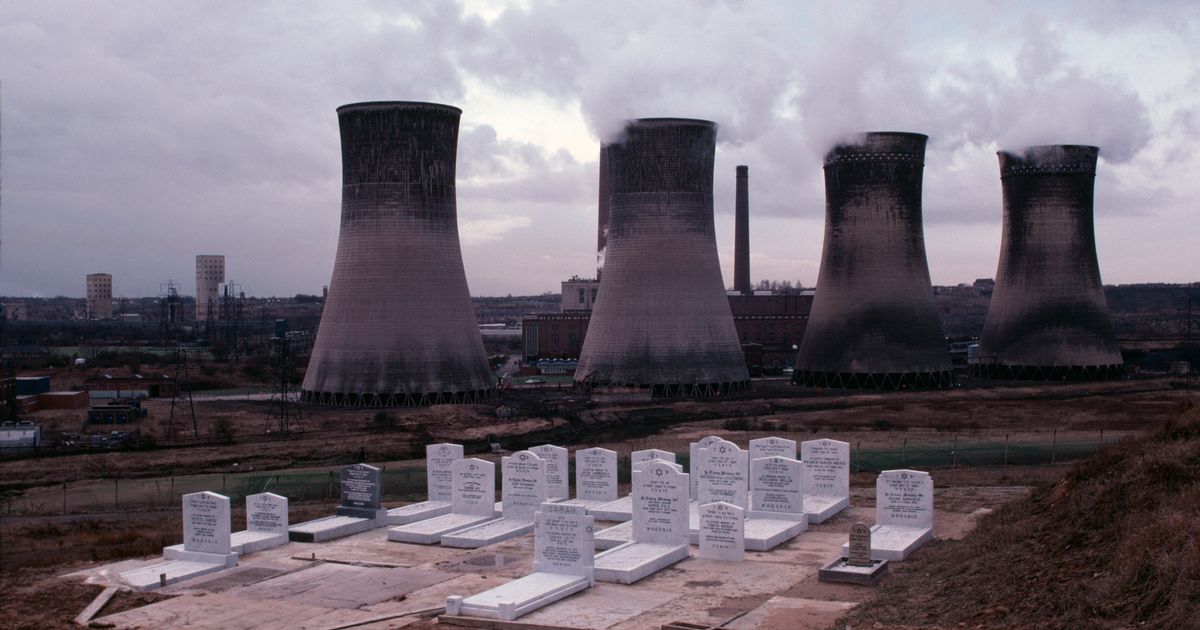The building of Agecroft Power Station and its iconic towers ushered in a new age for Britain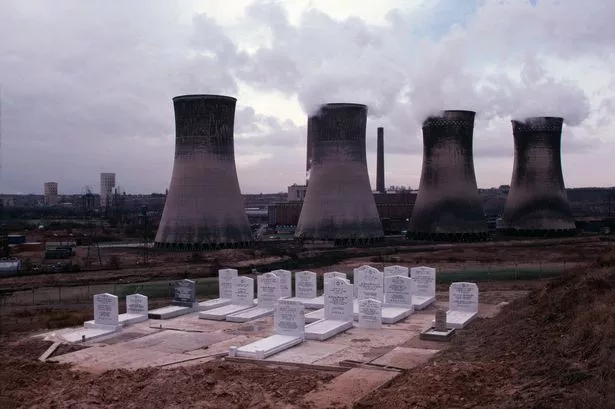 Agecroft Power Station cooling towers overlooking the Jewish Cemetery
Agecroft Power Station cooling towers overlooking the Jewish Cemetery
Dominating the landscape of Greater Manchester for decades, the giant concrete towers and chimneys of Agecroft Power Station were built to spark a new era of electric power in Britain.
Located on the banks of the River Irwell at Pendlebury, the site consisted of three power stations. The first opened in 1925, when metropolitan areas began to be more widely supplied with electricity, but still 10 years before the establishment of the National Grid.
Electricity was first used for lighting in a few wealthy homes in the late 1870s. However, it was only after the First World War that all new homes were built with electricity from the 1920s onwards.
Supplied by Agecroft Colliery, which had been mining coal since the 1840s, the Manchester Evening News reported the opening of the power station on September 23, 1925: “Another stage in the scheme promoted by the Electricity Commissioners for linking up the electrical supply of the country was reached when the power station at Agecroft was opened.”
Adding, the power station building “marks the commencement of a new era for electricity in this part of the country.”
The first of the three stations on the site was built by Salford Corporation in 1925 and remained in service until 1965. A second (B) station was added in 1950 and closed in 1982.
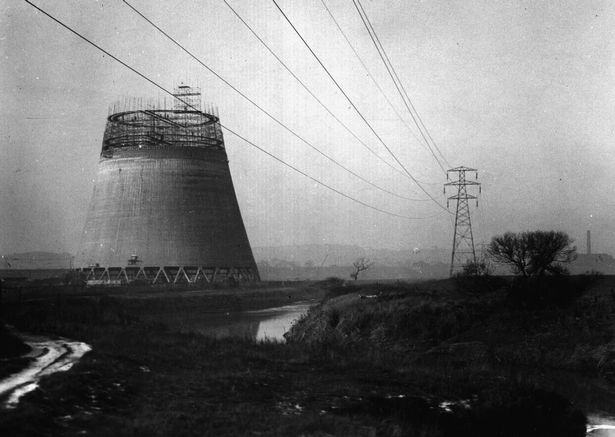 Construction of Agecroft Power Station cooling tower. November 29, 1947.(Image: @Manchester Libraries and Local Archives)
Construction of Agecroft Power Station cooling tower. November 29, 1947.(Image: @Manchester Libraries and Local Archives)
The most recent Agecroft C power station came into operation in 1959. The stations used cooling water supplied from the River Irwell, with the B and C stations cooled by the four large natural draft cooling towers located close to the riverbank.
However, following the privatisation of the industry under the Thatcher government in 1990, power stations across the country began to close.
Join the Manchester Evening News WhatsApp group HERE
With significant job losses and mass closures in a rapidly changing industry, the writing was on the wall for Agecroft. The colliery closed in 1991, and the power station’s closure was announced in November 1992, resulting in around 450 job losses.
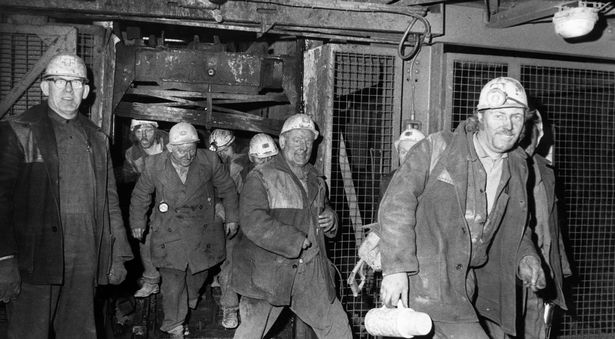 Miners leave the cages at Agecroft Colliery, Pendlebury. January 5, 1972
Miners leave the cages at Agecroft Colliery, Pendlebury. January 5, 1972
The station closed in March 1993, and the demolition process started later that year. The four cooling towers and two main chimney stacks were set to be demolished in May the following year.
While many mourned the industry’s loss to the region, not all were sad to see the towers go.
Just days before the planned demolition, a story in the Salford City Reporter read: “A blot on the landscape will be removed forever on Sunday, when the cooling towers at the shut down power station will be demolished.”
Roads around the site were closed, and several homes were evacuated in preparation for the controlled explosion.
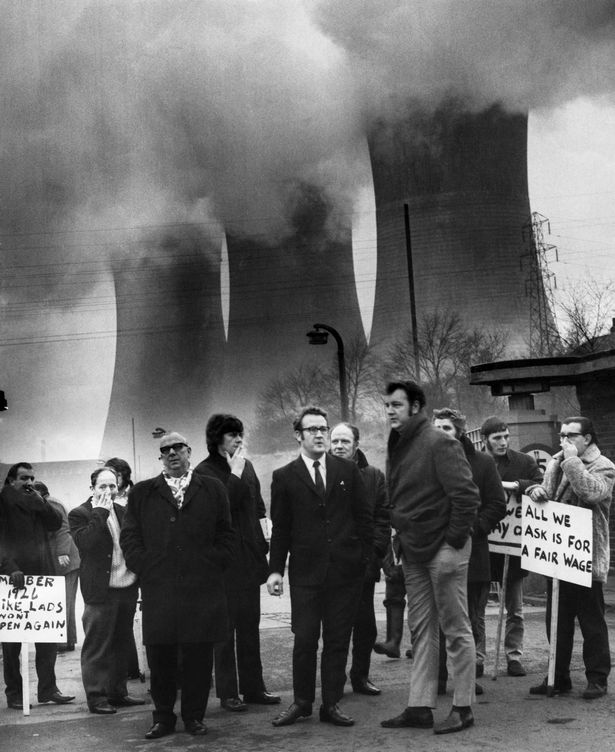 Picketing at the entrance to Agecroft power station, Pendlebury with clouds of vapour still drift from the cooling towers in the background. January 17, 1972
Picketing at the entrance to Agecroft power station, Pendlebury with clouds of vapour still drift from the cooling towers in the background. January 17, 1972
But just before the towers were about to come down, a last-minute rescue took place. Greater Manchester Police sent a police helicopter to scare off a peregrine falcon that had built a nest and laid its eggs nearby.
A rescue team scaled a building close to the towers to rescue four eggs from the falcons’ nest. The falcons were the only pair in Greater Manchester and had built their home on a windowsill a hundred feet up.
The falcons’ rust-speckled eggs were removed, and warmed-up dummy eggs made of plaster were put in their place. The real eggs were wrapped in cotton wool and kept away from the explosion.
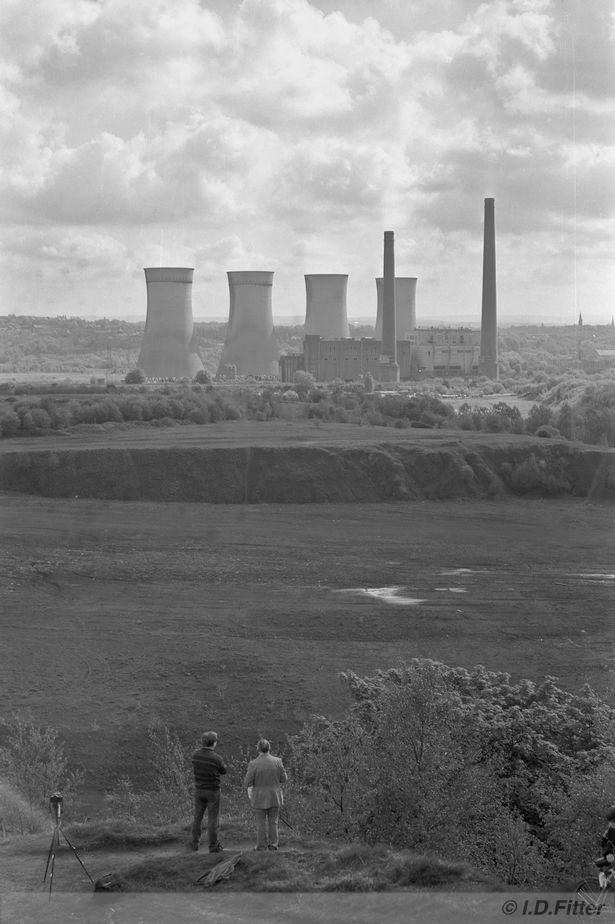 Moments before the demolition of Agecroft Power Station in Pendlebury, Salford. May 8, 1994(Image: Ian Fitter | flickr.com/photos/ianfitter/)
Moments before the demolition of Agecroft Power Station in Pendlebury, Salford. May 8, 1994(Image: Ian Fitter | flickr.com/photos/ianfitter/)
Chief Inspector Dave Edge said: “Just before the blast the female was away from the nest but the cock was on his roost on top of the chimney. We sent up a helicopter, he decided our bird was bigger than he is – and buzzed off.”
At 10 o’clock on May 8, 1994, an eight-second blast reduced the four 312ft cooling towers and two 450ft chimneys to 23,000 tonnes of smouldering rubble.
Following the demolition, the local skyline was dramatically changed, and ideas were floated about what to do with the site. For a while, there was talk of redeveloping it into a place of natural beauty by turning the land into a country park.
However, when it was announced later that same year that a new 800-inmate prison would be built on the land, it sparked uproar among locals and vocal opposition from the Labour-controlled Salford Council.
Despite this, the plans for the prison were given the green light and Forest Bank Prison was constructed on the site, opening in 2000.
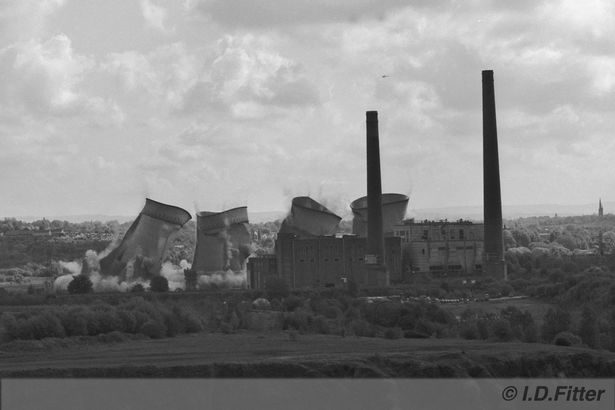 The demolition of Agecroft Power Station in Pendlebury, Salford. May 8, 1994(Image: Ian Fitter | flickr.com/photos/ianfitter/)
The demolition of Agecroft Power Station in Pendlebury, Salford. May 8, 1994(Image: Ian Fitter | flickr.com/photos/ianfitter/)
Despite it being over 30 years since Agecroft Power Station closed and its towers demolished, people still have vivid memories of the iconic structure, sharing memories of the power station on the We Grew Up In Salford Facebook group.
Mel Jones said: “When l lived in Prestwich, my house faced towards them but they were out of sight. I could, though, see the steam. One day the steam looked just like a perfect mushroom cloud as if WW3 had started. Being 40 years ago we didn’t have camera phones so l have no record of this event.”
Ann Conway said: “They were such a landmark. Sad when they went.”
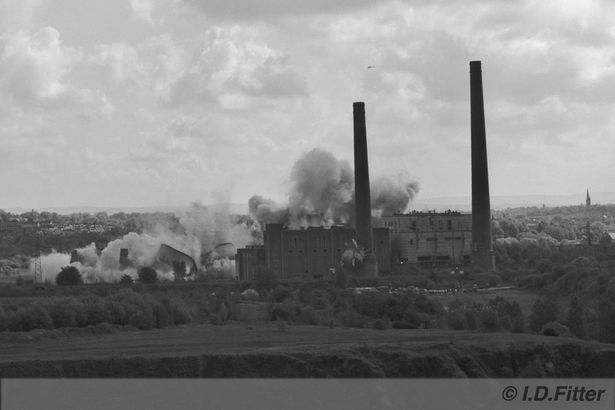 Agecroft Power Station reduced to rubble in seconds. May 8, 1994(Image: Ian Fitter | flickr.com/photos/ianfitter/)
Agecroft Power Station reduced to rubble in seconds. May 8, 1994(Image: Ian Fitter | flickr.com/photos/ianfitter/)
Gill Twemlow remembered: “Our dad worked there, we could see these [cooling towers] from our house. Great memories at Agecroft – family days and Christmas parties.”
Peter Sales said: “What a landmark – fantastic. I remember when they let off the excess steam, [a] great sound heard for miles”.
Marjorie Murphy said: “I remember watching them being demolished. Wow!”
Stephen Ellis also said they witnessed the towers’ destruction, saying: “I watched them blow them up – it was incredible”.
While Rose Tattersall remembered: “When the towers came down I had been on a night shift. The whole house shook; scared the bloody life out of me”.
